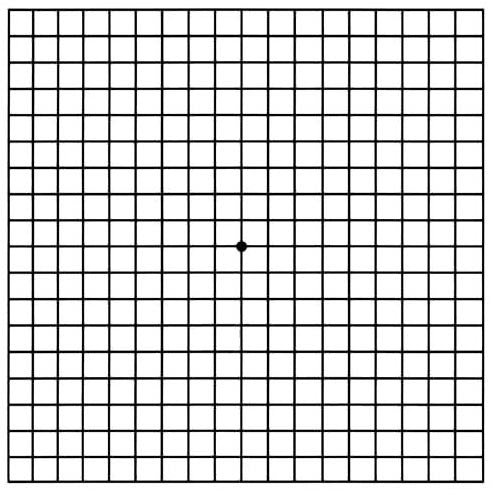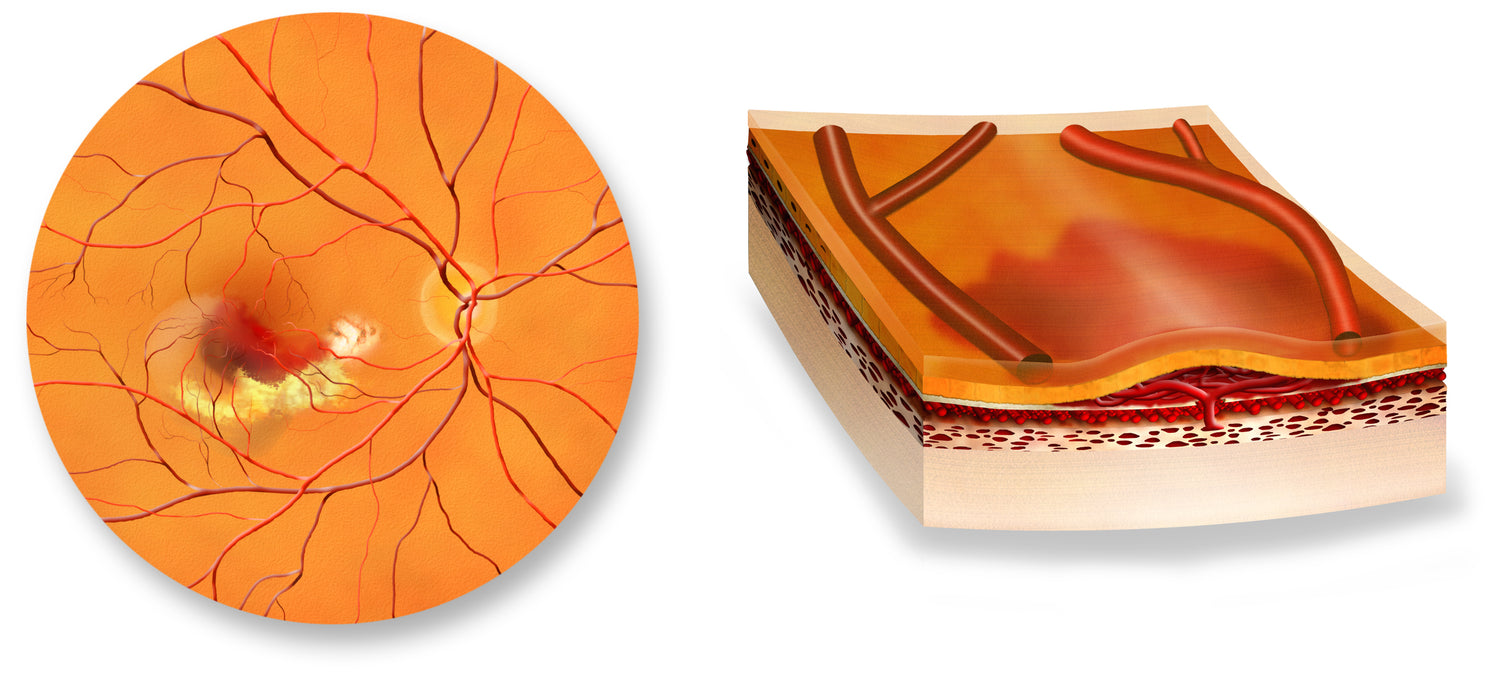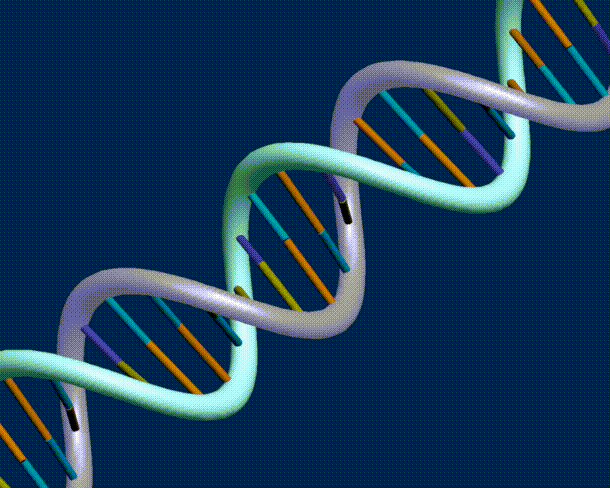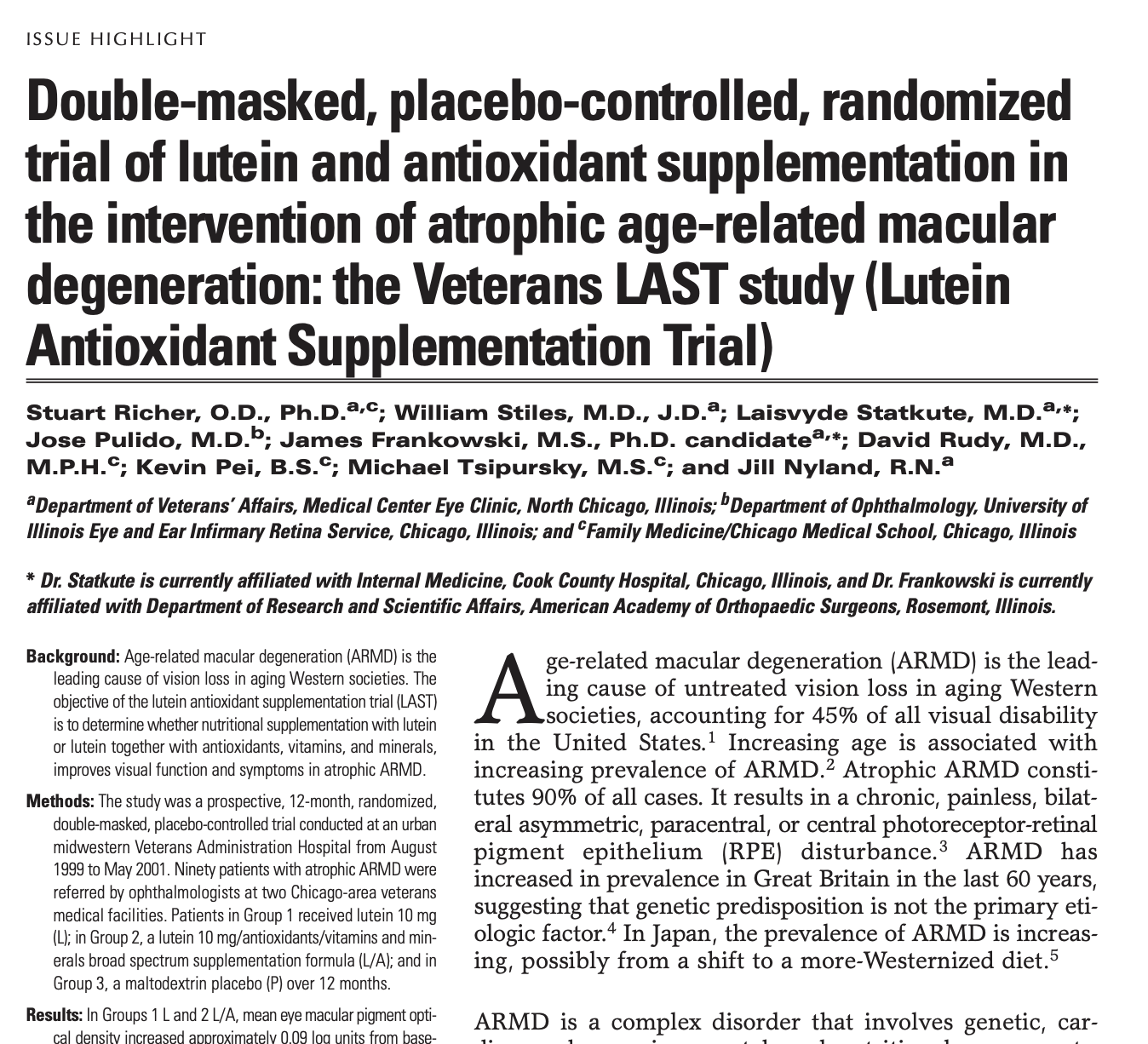There are two types of Age-Related Macular Degeneration (AMD)
The two forms of age-related macular degeneration (AMD) are dry macular degeneration (atrophic macular degeneration) and wet macular degeneration (exudative macular degeneration).
Although both forms can cause extreme vision loss, dry macular degeneration is the less severe version of AMD. Wet macular degeneration only occurs in about 10% of people diagnosed with AMD, but can cause permanent blindness in a short amount of time.

Wet AMD occurs as a result of blood vessels under the retina.
Abnormal, fine and fragile new blood vessels known as choroidal neovascularization grow under the retina in wet macular degeneration. These new blood vessels can leak fluid and blood and cause sudden vision loss. Formerly, this bleeding would cause extensive scarring and was untreatable other than burning the blood vessels with laser and limiting the extent of damage, though central vision blindness would often result.
Fortunately, new treatments and medications are now available for wet macular degeneration. The medications that are used are called Anti-Angiogenesis Drugs , and fall in various classes known an monoclonal antibodies, vascular endothelial growth factor, (VEGF) inhibitors.
The medications include:
- Bevacizumab (Avastin)
- Ranibizumab (Lucentis)
- Aflibercept (Eylea)
In order to be effective, these medications have to be instilled directly inside the back of the eye into a chamber called the vitreous body. Currently, the medications are instilled periodically - as often as monthly - by a fine needle after the eye has been anesthetized, although studies are underway to find a method that requires less frequent treatments.
Without treatment, Central vision loss is one of the main symptoms.
The new blood vessels that develop under the retina force the macula to lift up. This typically causes rapid central vision loss. A wet AMD patient will often see dark spots in the center of their vision. In addition, straight lines will appear wavy.
A common and simple test to assess for distortion using the Amsler Grid Test to discover if you have AMD symptoms. These are available in printed form. To assess for visual distortion, look directly at the center dot. In the periphery of your vision, note any area where you see the vertical or horizontal lines distorted or wavy.

Vitamin Supplements
Nutritional supplements based upon AREDS and AREDS 2 have been shown to slow the progress of the dry form of macular degeneration. While eye vitamins cannot slow or reverse wet macular degeneration, some studies suggest that taking them may reduce the frequency required for intraocular injections.
VisiVite has a wide array of formulas built upon the AREDS and AREDS 2 research.














